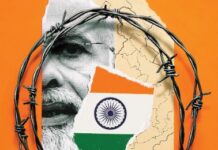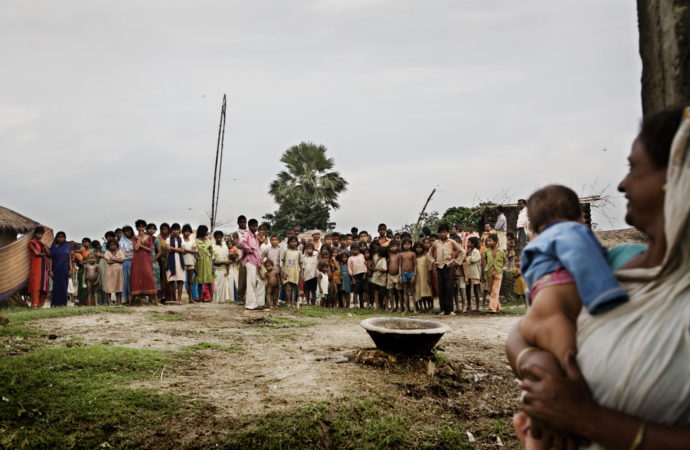In this context, ‘Social Justice’ is a term placed between comparative and contractarian approaches contextualized in society where justice is conceptualised in abstract principles of jurisprudence and in the sense social justice is an ideal construct which creates a society which ensures rights and opportunities for all people, irrespective of whether the State steps in to provide these rights and opportunities. The cognition of this reality goes back a very long time, it however, began to jump into reality as a result of the Industrial Revolution and subsequent democratic movements in Europe and elsewhere. The concept of social justice emerged in the 19th century with the aim of establishing more egalitarian communities and eradicating capitalist exploitation of human labour and mainly concentrated on money, land, and wealth distribution. Soon thereafter, in the 20th century the scope of social justice widened to include the environment, race, gender, and other causes and manifestations of injustice, and going a step forward, it adopted other aspects of social life apart from mere economy.
In a country like India where exclusion and discrimination had a long history, affirmative action or positive discrimination in favour of the underprivileged or excluded is necessary as a corrective measure to compensate past discrimination. In general, it is a set of policies and practices that are used to create equal and new opportunity, primarily at workplaces and educational institutions with an object to redress the perceived disadvantages prevailing in institutions in the form of any kind of discrimination
Gradually, it also crossed the national boundaries to include the universal human element as the United Nations declared that slaves, exploited workers, and marginalised women are above all abused human beings whose position is of less significance than their circumstances. In this sphere justice itself has acquired three components— legal, commutative, and distributive. Legal justice is about what people owe society, commutative justice addresses what people owe each other while distributive justice is about what the society owes the individual. Now, it is neither approaches nor social choices regarding distribution of goods and resources, but consideration of structuring of societal institutions to guarantee human rights and dignity and ensure opportunities for free and meaningful social participation.
In this wider framework of social justice discrimination in society is an obvious form of social injustice. Discrimination is essentially a phenomenon that gathered momentum in the second half of the 20th century when the reality of society was observed and clearly found that society did not provide rights and opportunities for a significant proportion of people who are subjected to discrimination in one form or another. The makers of the Indian constitution being strongly affected and acting upon holy notion of social equality and social justice at the time of Independence the terms, like Socialist, Secular, Democratic, and Republic, were inserted in the preamble of the Constitution.
It, however, still a long journey for India to have a satisfactory level of social justice because a lot has to be done apart from law-making and providing for affirmative action.
In delivering social justice, working institutions of the country, political democracy, ideology of the state and ruling mode of a country play a very decisive role which we cannot deny easily. While the nation state focuses on the emergence of nationalism which led to a slow but steady erosion of multiple identities that developed into a national identity and put less emphasis on reducing social discrimination or injustices prevailing in the society, in political democracy. That idea of egalitarianism is promoted which tries to minimise inequality and believes in provisions begun from above with a push from below, but which taken together both play a positive role in the search for social justice.
Like these, the current ideologies of capitalism and communism, address the issue. Capitalism works in a different way and does not seek to reduce or eliminate pre-capitalist forms of discrimination inherent in feudalism, serfdom or bonded labour, and rather creates a new form of exploitation mixed with progress and dilution. For instance, in a developing world imperialism led to exploitation and nationalism is followed by some kind of progress, while globalisaton is meant for dilution.
Then there is political democracy which enhances the role of the state, regulates and controls the market and paves the universal way for social justice. In today’s circumstances, globalisation is acting as a negative force for social justice by limiting the activities of state as well as integrating the world market which largely depend on factors beyond state’s control.
In comparison to other systems, institutions and ideologies, socialism or communism tries at its level best to reduce, if not eliminate, the prevailing forms of discrimination that easily persist in capitalism and over the years when capitalism transits to socialism, signifying from everybody according to their ability, to everybody according to their work, but transition from socialism to communism which signifies from everybody according to their ability, to everybody according to their need.
In fact, the socialist system appears to reduce some old forms of discrimination but on the other it also creates some other kinds of privilege and exclusion as found in the erstwhile USSR and the hopes too belied in case of present-day China, where the rule of Communist Party still persists. The current system of China is described as market socialism which commands less control on capitalism in due course and in the context, Cuba is the first socialist country with a communist government which has, to a large extent, eliminated discrimination based on gender and race and provided equality of opportunity but it too has failed on several other important counts.
At this juncture, the quest for social justice requires affirmative action or some kind of reservation when exclusion takes the form of discrimination against an identifiable group or groups on the basis of caste, race, religion, gender and ethnicity and social legislation is necessary but not sufficient, especially in a country where it is embedded in history.
In a country like India where exclusion and discrimination had a long history, affirmative action or positive discrimination in favour of the underprivileged or excluded is necessary as a corrective measure to compensate past discrimination. In general, it is a set of policies and practices that are used to create equal and new opportunity, primarily at workplaces and educational institutions with an object to redress the perceived disadvantages prevailing in institutions in the form of any kind of discrimination.
However, in most cases when the exclusion or discrimination is historical and embedded in beliefs or ideologies, it fails to combat these beliefs or discrimination, but it can change the initial conditions that created discrimination in the past, and it is the point where economic, social, and political empowerment for the excluded is essential and for getting that situation political democracy is preferred as a partial/initial remedy of the problem.





















